- Home
- John Creasey
The Terror Trap (Department Z Book 7) Page 13
The Terror Trap (Department Z Book 7) Read online
Page 13
Discussion continues regarding the purpose and plans for the radiation treatments that are about to become a vital part Dixie’s wellness recovery regimen. The radiation treatment is being designed to pinpoint the precise location where the tumor had been, in order to lower the risk of cancer cells returning. This particular ampulla of vater carcinoma is very rare and aggressive and can return to the original site, while spreading to other areas at the same time. The combination of chemo and radiation therapy lowers that risk. She is told of studies showing the two treatments together having lowered risk of return on average from 40–50% to 10–15%.
Of course there are side effects to radiation therapy, as with chemotherapy. Localized aggressive treatment at the target area may cause damage to the surrounding tissue, like a scar from a cut on your hand. There is a small risk that the resulting scar tissue might require surgical removal. There may be additional nausea, needing to be managed with anti-nausea drugs similar to those with chemotherapy. Most certainly there will be added fatigue. The cumulative effect of radiation will build over the first three weeks, with fatigue and nausea becoming even more of a problem during the final three weeks of the regimen.
In the afternoon, at SCCA, Dr. Chiorean tells us the blood work of May 30 looks very good. The earlier schedule, after consultation with Dr. Kim, the attending radiologist, is being changed. No more chemo infusions for now. Her body will likely not stand up to it. Instead, she will take the chemo pill, Xeloda. Two in the morning and one at night, Monday throughout Friday, while undergoing radiation.
She is assured Xeloda is easier on the body, but can still cause mouth sores, nausea and / or diarrhea. Also the skin on palms and feet may become swollen and sore. While it is unlikely, she may also feel a tightness or burning in her chest. If any of these things happen, she is to stop taking Xeloda and call Dr. Chiorean. She is told any negative effects are reversible.
Dixie is to begin taking vitamin B6 (100mg) three times per day. Vitamin D (5000mg) once per day, along with the Xeloda and an antacid on the morning of radiation. This will help minimize the effects of radiation on the stomach. Ondansetron the morning of radiation will also help with nausea. It all sounds a lot like an advertisement for a drug on the evening news, during which all the predicted unwanted side effects take longer to tell about than do the reasons why you should take the medicine in the first place.
Next a visit with the Nutritionist and ideas designed to help regain weight. Dixie weighs in at 100 pounds, a 20 percent loss since this ordeal began. Use three-tablespoon equivalents of olive oil per day. Put it in smoothies along with rice protein powder from the health food store, vegetable juices, soups. Keep juices in the refrigerator. Drink less water and more juices, 60oz of fluid a day. Try Kombucha, a lightly effervescent fermented drink of sweetened black or green tea used as a functional food. For taste use a slow cooker for richer tasting food. Cook with chicken thighs for more fat. Trader Joe’s has simmering sauces that will give flavor. In other words, do everything you can to regain some of the lost body weight. Really?
Later that night, Dixie keeps warm under a blanket in the library while writing in her notebook:
The lingering question still reverberates through my mind: “Why do you think you’re here?” Only now the question has to do with my physical presence on earth and my present age. I am closer to the next “O” birthday than to the last. I’ve been engaged in ministry for all my adult life. My children are launched. I’ve enjoyed grandchildren, and even a great-grandchild. Do I still have a purpose? Why do I think I am here?
I am unable to answer that question as yet. Answering the oncologist was direct and on target. I was there to learn about the ramifications of radiation and what to expect, to learn about side effects and prolonged life. Answering a life question does not, in the immediate, seem so direct. And yet, isn’t it much the same? If I am asking that question of God or he is asking it of me, what would my answer be?
“Why do you think you’re here?”
Peter couldn’t face the life “facts” that Jesus gave him about his future, so he diverted the direction of their conversation by asking about the life “facts” of John. Paul faced his life “facts” directly: “For to me, living is Christ and dying is gain” ~ Philippians 1:21.
I eagerly expect and hope that I will in no way be ashamed but will have sufficient courage so that now, as always, Christ will be exalted in my body whether in life or in death. For to me, living is Christ and dying is gain. If I am to go on living in the body, this will mean fruitful labor for me.
Fruitful labor. Does God look at percentages as the oncologist would? I think not. God looks for obedience and what it will do in and for the life of the individual.
Why do I think I am here at this time, in this condition, for whatever the length of time remaining on earth? What is of greater importance to life than to be obedient to God’s will? To fulfill his purposes in and through me. This is why I am here. ~ DLT diary, June 2014
Friday. We cross the SR 520 bridge and return to UWMC. At 1:30, the Nurse Teach goes over the radiation procedure once more. There is the formal signing of a legal agreement giving permission to all that will be done and assuring the powers that be of all the things we will not do should anything go wrong. This is followed at 2 o’clock by yet another CT scan with dye and simulation, as the computer continues what it had begun the day before in making a high tech model of the target area on and in her body.
The radiation schedule is established, pushed out a few days because she has had the CT scan with contrast two days running. The contrast dye needs a chance to make its way through the kidneys. Too much all at once. The first radiation day will be Monday, 16 June, at 12:30, followed by treatments each morning at 8:30, Monday through Friday, for six weeks, ending 25 July.
23
Where Help Comes From
Lord, you know what’s in my heart and you know what’s in my way.
Help me to fully surrender the first and fully conquer the other.
~ DLT diary, August 1990
As America’s favorite author, storyteller, humorist, and radio talk show host, Garrison Keillor might say, “It’s been a quiet week in Lake Wobegon.” And a pretty good week, too, judging by recent week standards in our lives.
I take care of several appointments during the week, completely blowing one I had especially looked forward to, by getting too involved in some much needed catch up work. I’ve since been granted a second chance by this long-suffering friend; it seems more than the usual amount of grace is needed in my life these days. Is this something you notice in your life too?
Of course no week would be complete without the obligatory trip across Lake Washington to UWMC, or, as was the case this Thursday, a visit to the good folk at SCCA. All this week there have been no chemotherapy sessions, a big reason why it has been a “pretty good week.” But this is about to change. So the trip to SCCA for a pharmacy teach with Dr Roy Mark is the last preparation event before the radiation / chemo combo gets underway on Monday.
The drug Gemcitabine is being replaced with Capecitabine, a type of chemotherapy that is used to treat many different cancers, including breast, colon and rectal cancers. Capecitabine interferes with the growth of cancer cells. And it is an oral medicine available in 150mg or 500mg tablets, Dixie’s being the latter. The good doctor apologizes for the co-pay before he tells us the amount (always the harbinger of bad tidings when this happens). We are taught how and when to take the tablets, what to do if a dose is missed and, of course, the ever-present possible side effects.
The palms of your hands and soles of your feet may tingle, become red, numb, painful, or swollen. Your skin may become dry or itchy. If blisters, severe pain or ulcers occur, you may not be able to do your daily routine. Avoid tight fitting shoes, clean your hands and feet with lukewarm water; avoid hot water, and take Vitamin B6 to help mitigate this side effect.
There are other side effects i
ncluding diarrhea, nausea, vomiting, and decreased blood counts (lowered platelet, red and white blood cells). Sores can occur on the tongue, the sides of the mouth or in the throat. Such sores and bleeding gums can lead to infection. One’s skin may sunburn easily (welcome to summer). And fatigue. With the combination of daily radiation and chemotherapy (weekends excepted), increased fatigue is guaranteed between now and 25 July. There is a list of medicines to take, one after another, until one actually offsets the side effects if and when they come. We are assured these are the most common side effects, but there are others. We don’t ask.
After July, two rounds of additional chemotherapy by infusion are anticipated, concluding sometime in September. If nothing untoward arises between now and then, seven months of healing and wellness will have come and gone. For Dixie and me, for our family, and for thousands of precious friends who have been our prayer partners through it all, a new day will dawn. Once again, our days will become weeks, and weeks will turn into months as health and strength is regained.
It is daunting. At times almost overwhelming. All the more reason we live one day at a time for now, with a huge dependence on prayer partners in the US and Canada and around the world. There are days when my prayers don’t seem to make it past the ceiling. On those days, I just step outside. I like it outdoors, where it feels there is nothing at all between God and me. I get it that the Father is everywhere present, and the Holy Spirit resides in all his potential in the life of every Christ follower, the One true and living God; not just outside in the great outdoors, but in our homes and in our hearts. It isn’t about his inadequacy that I’m concerned. It is about mine.
And on the days when I do step outside and look to the hills and mountains, the forests and the sky surrounding and watching over our city, there is an amazing eternality about it all. Suddenly it is hard for me to imagine how anyone could miss it. I know if you were standing here with me right now, you would see it, too. And when I ask, “From where does my help come, Lord?” I am certain in that moment I feel him smiling. He knows I know. But like a father to his son, he says it anyway, gently reminding me, “My help comes from the LORD, who made heaven and earth” (Psalm 121:2).
Today as I feast on the awesome beauty around us, the snow-capped heights, the green and various other colors of hills and flowers, I’m aware of your majesty and beauty. And my response can only be “YES.” “YEA GOD.” Thank you for the opportunity and the eyes to behold it.
When I think of your majesty, I sometimes wonder how to approach you. Do I barge into your presence as a child would an earthly father? Or do I approach you as an adult child would their father, with honor and dignity and respect?
Jesus taught us to “hallow your name” as we pray. Do “barging” and “hallow” belong together? Probably not, especially since I am an adult child . . . or should be by now.
So, how do I reconcile Your Majesty, hallow your name and still be comfortable with “Abba Father?” Are there seasons of appropriateness for both, or are they both appropriate at all times?
My desire is to give you honor and glorify your very name as holy, and still approach you as comfortably as a child would their father. Perhaps that’s the answer. I can say, “YEA GOD” when I see your majesty and still see you with my soul when I understand our relationship is like a loving Father with an insecure child.
Thank you Almighty Father, Abba Father . . . Daddy! ~ DLT diary, February 1996
With deep faith come deep longings.
24
Left Alone
. . . So the woman was left all alone . . . ~ Ruth 1:5
This phrase is from the amazing love story of mother-in-law, Ruth, and daughter-in-law, Naomi, in the Bible. A beautiful story beginning with pathos and tragedy, ending as with all great love stories in triumph and blessing. But in the middle, lies a story dark with cruel hardship and sadness. Trapped in life’s out of control circumstances, Naomi finds herself too far in to turn back, yet not far enough in to see the light at the end of her difficulty.
The middle. It always seems to be the hardest, doesn’t it?
It was in March that Dixie and I first met in consultation with several doctors, one of whom was Dr. Edward Kim, the radiation oncologist, who reviewed her medical tests and completed a physical examination. Dr. Kim discussed with us the potential benefits and risks of radiation therapy, answering any questions we could think of at the time. A radiation oncology nurse was also assigned, educating and guiding us through the treatment process. And now, weeks later, after a major Whipple surgery, rounds of chemotherapy, a liver biopsy, pills and shots, hospital rooms and doctor’s visits, we have arrived.
In the middle.
Monday. To be effective, her radiation treatment must be aimed precisely at the same target each and every time it is given. With this in mind, Dixie has been measured and marked with colored, semi-permanent ink and small skin tattoos, to help the team aim the treatment safely and exactly at the target area. A plastic mold of her head and shoulders has been designed to help her remain immobilized, in the same exact position during each treatment.
Special computers are used in planning where and how the radiation will be delivered. Shields have been made, some are in the machine, all put into position before each of her treatments to shape the radiation and keep the rays from hitting healthy tissue. This preparation process is time consuming and has taken several days to complete.
Her visit involving the treatment machine today is a Verification Simulation final test run. The procedure ensures the plan that has been customized for her treatment lines up correctly on her body and covers the abdominal area. No treatment is given. Today is just a rehearsal. The real action begins tomorrow and continues every day thereafter, excluding weekends, for six weeks. She is told to plan at least 30 minutes for each appointment.
Tuesday. We arrive at UWMC shortly before 8 o’clock in the morning, check our car with the valet, a first for us, but part of the service offered to all daily patients. Elevator down to F1. Check in. The receptionist hands Dixie a buzzer. At 8:35 it goes off. I watch as she disappears down the hallway. I’m not permitted to go with her. In half an hour she returns and, without a word, we walk to the elevator. I understand this much as I look into her face. It has not been a pleasant experience.
Finally, I break the silence. “How was it?”
“Scary,” is her one-word answer, as she stares straight ahead. Nothing more for now. We drive home, allowing the silence to linger between us. This will not be a good time for conversation. The facts and feelings will come later, in bits and pieces, over the next couple of days.
Meanwhile, the CASA Network board of directors have flown in this week. And I am their leader. They will be here until Thursday noon concentrating on ministry plans, challenges and opportunities for present and future ministry to and through those in the second half of life. Our daughter is working. Our son is in Hong Kong. Other family members are scattered. Life goes on as usual for everyone around her, while she battles for life itself.
. . . So the woman was left all alone . . .
Wednesday. A friend, Nancy, drives Dixie to UWMC while I host my early morning C3 Forum of business leaders and retirees, moving on to a day with the CASA board. The topic centers on leadership transition as I have already informed the board that I will no longer be able to continue in this role. Meanwhile, Dixie is adjusting to the new normal.
When undergoing External Beam Radiation Therapy treatment, each session is supposedly painless, like having an X-ray taken. In Dixie’s treatment, radiation is directed to the abdominal area from a machine located outside of her body, called a linear accelerator. These x-rays can destroy cancer cells and with careful treatment allow the surrounding normal tissues to avoid being radiated.
Each treatment takes 15–30 minutes. Much of this time is spent spelling out her full name, letter by letter, together with her birt
h date, positioning to ensure accuracy for the treatment, and the remaining time for actual treatment delivery. To deliver the treatment, the therapist goes outside the actual treatment room and works the linear accelerator from a designated control area. The therapist closely monitors her via a camera and intercom system, while Dixie is by herself in the room. No one else. Just more time to do battle with depressing fears and loneliness.
Thursday. This morning is the final day of CASA board meetings. Niece Robin comes to be Dixie’s driver. One or more directions may be used for her treatment delivery and the beam may be on for anywhere from ten seconds to several minutes for each field. Today’s radiation therapy is followed by a visit with the resident radiation oncologist and nurse who are assigned to follow Dixie’s progress, evaluate whether she is having any negative side effects, recommend treatments for those side effects and address any concerns she may have.
The darkness she felt earlier in the week is gradually lifting. Back home, she prepares to join CASA board members and some of their spouses who have traveled here with them. They have been looking forward to seeing their friend. We have a Mexican dinner at Tapatios in nearby Factoria, and later welcome them into our home for dessert. She is greeted warmly by all these who are also her friends and prayer partners. At the conclusion of an evening full of shared laughter and life stories, our friends gather around us to offer heartfelt prayers and words of encouragement. Faith, hope and love. These three. And the greatest is love.
If you’ve never read the Old Testament story of Ruth and Naomi, you should. If you have, it’s worth a do over. Like all great love stories, there is a happy ending. Naomi’s daughter-in-law, Ruth, marries Boaz and gives birth to a son whom they name Obed. Naomi is a grandmother, a dream she had thought might never come true! Years later her grandson, Obed, becomes the father of David, who is chosen to be King of Israel. And in the generational lineage from Naomi’s grandson, we eventually find another whom we all know, a man named Joseph, whose wife is Mary . . . virgin mother of Jesus, Son of God.

 Feathers for the Toff
Feathers for the Toff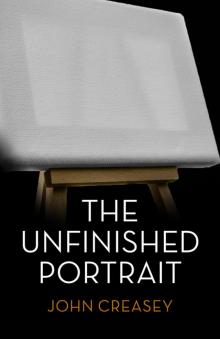 The Unfinished Portrait
The Unfinished Portrait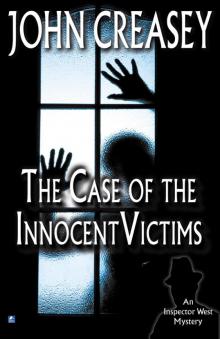 The Case of the Innocent Victims
The Case of the Innocent Victims Love for the Baron
Love for the Baron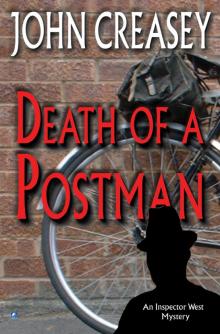 Death of a Postman
Death of a Postman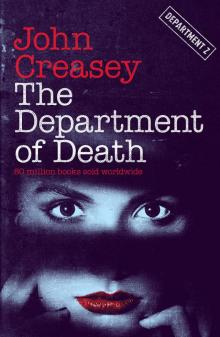 The Department of Death
The Department of Death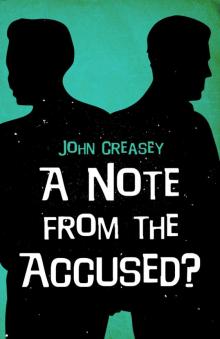 A Note From the Accused?
A Note From the Accused? If Anything Happens to Hester
If Anything Happens to Hester The Stolen Legacy
The Stolen Legacy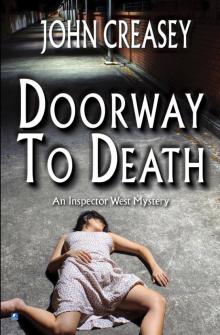 The Doorway to Death
The Doorway to Death Into the Trap
Into the Trap Look Three Ways At Murder
Look Three Ways At Murder A Part for a Policeman
A Part for a Policeman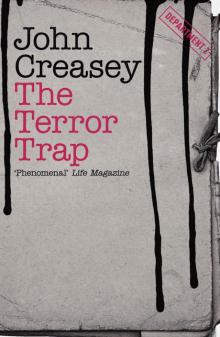 The Terror Trap
The Terror Trap A Good Read
A Good Read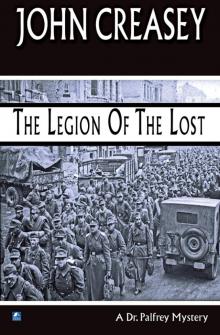 The Legion of the Lost
The Legion of the Lost Sport For Inspector West
Sport For Inspector West Double for the Toff
Double for the Toff Nest-Egg for the Baron
Nest-Egg for the Baron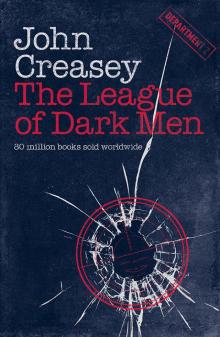 The League of Dark Men
The League of Dark Men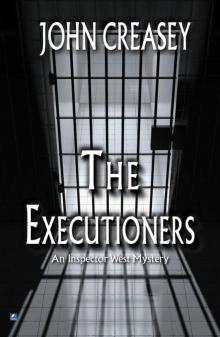 The Executioners
The Executioners Blood Red
Blood Red Last Laugh for the Baron
Last Laugh for the Baron The Toff and the Runaway Bride
The Toff and the Runaway Bride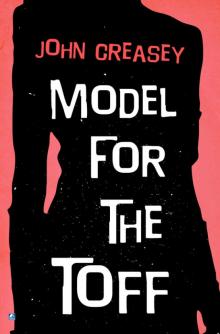 Model for the Toff
Model for the Toff The Warning
The Warning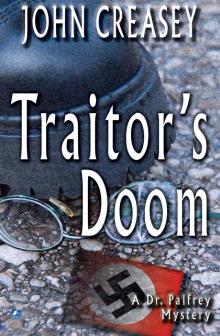 Traitor's Doom
Traitor's Doom The Arrogant Artist
The Arrogant Artist The Chinese Puzzle
The Chinese Puzzle Darkness and Confusion
Darkness and Confusion Sabotage
Sabotage The Toff Breaks In
The Toff Breaks In Hunt the Toff
Hunt the Toff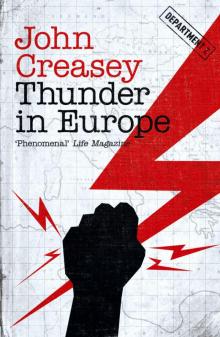 Thunder in Europe (Department Z Book 6)
Thunder in Europe (Department Z Book 6) The Extortioners
The Extortioners Murder, London--Miami
Murder, London--Miami The Scene of the Crime
The Scene of the Crime Sport For The Baron
Sport For The Baron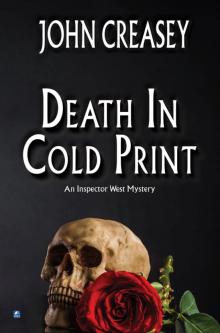 Death in Cold Print
Death in Cold Print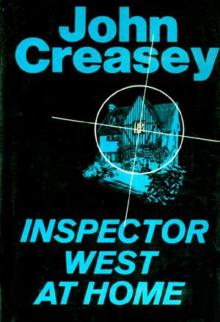 Inspector West At Home iw-3
Inspector West At Home iw-3 Murder, London--Australia
Murder, London--Australia The Toff and The Lady t-15
The Toff and The Lady t-15 Give a Man a Gun
Give a Man a Gun Held At Bay
Held At Bay The Man Who Stayed Alive
The Man Who Stayed Alive Inspector West Takes Charge
Inspector West Takes Charge The Toff and the Fallen Angels
The Toff and the Fallen Angels Redhead (Department Z Book 2)
Redhead (Department Z Book 2) Help From The Baron
Help From The Baron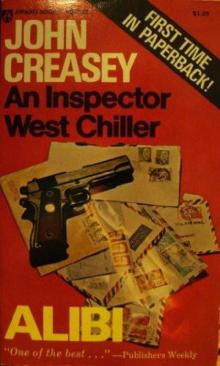 Alibi iw-39
Alibi iw-39 Go Away to Murder
Go Away to Murder Attack and Defence
Attack and Defence The Baron Goes East
The Baron Goes East Inspector West Regrets
Inspector West Regrets Gideon's Art
Gideon's Art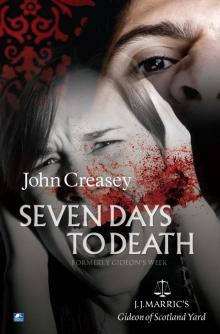 Seven Days to Death
Seven Days to Death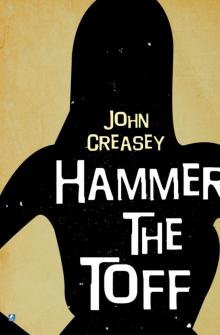 Hammer the Toff
Hammer the Toff Good and Justice
Good and Justice Taking the Blame
Taking the Blame The Island of Peril (Department Z)
The Island of Peril (Department Z) The Toff and the Terrified Taxman
The Toff and the Terrified Taxman Stars For The Toff
Stars For The Toff The Toff and the Deep Blue Sea
The Toff and the Deep Blue Sea The Blood Diamond
The Blood Diamond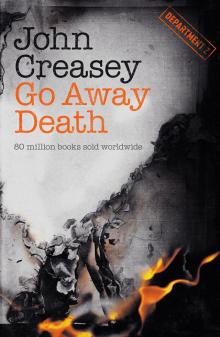 Go Away Death
Go Away Death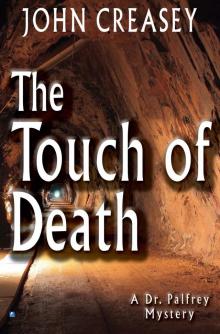 The Touch of Death
The Touch of Death Sport, Heat, & Scotland Yard
Sport, Heat, & Scotland Yard Gideon's Fire
Gideon's Fire John Creasey Box Set 1: First Came a Murder, Death Round the Corner, The Mark of the Crescent (Department Z)
John Creasey Box Set 1: First Came a Murder, Death Round the Corner, The Mark of the Crescent (Department Z)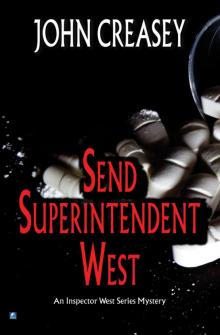 Send Superintendent West
Send Superintendent West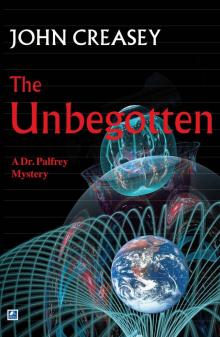 The Unbegotten
The Unbegotten The Baron Returns
The Baron Returns The Figure in the Dusk
The Figure in the Dusk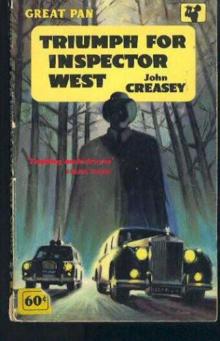 Triumph For Inspector West iw-7
Triumph For Inspector West iw-7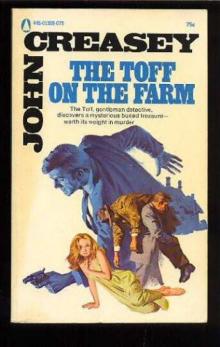 The Toff on The Farm t-39
The Toff on The Farm t-39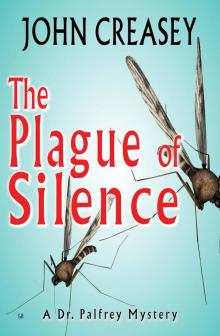 The Plague of Silence
The Plague of Silence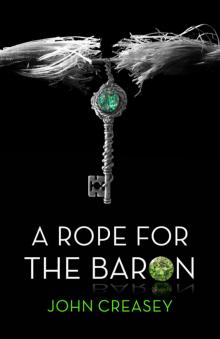 A Rope For the Baron
A Rope For the Baron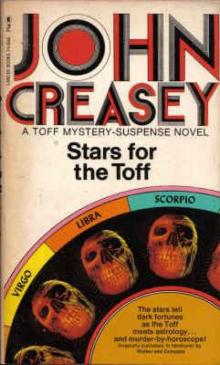 Stars For The Toff t-51
Stars For The Toff t-51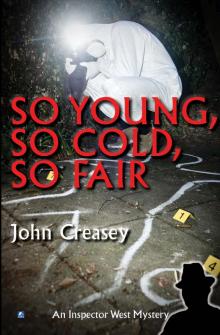 So Young, So Cold, So Fair
So Young, So Cold, So Fair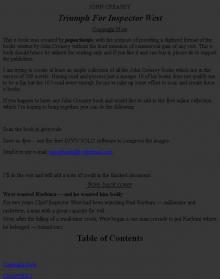 Triumph For Inspector West
Triumph For Inspector West Menace (Department Z)
Menace (Department Z) Inspector West At Home
Inspector West At Home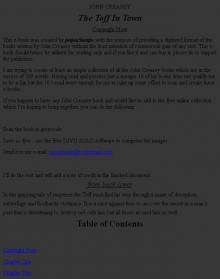 The Toff In Town
The Toff In Town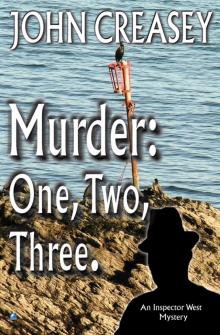 Murder: One, Two, Three
Murder: One, Two, Three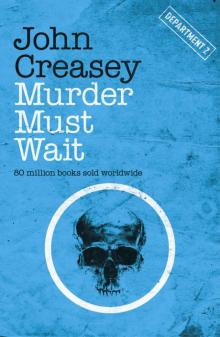 Murder Must Wait (Department Z)
Murder Must Wait (Department Z) The Toff In New York
The Toff In New York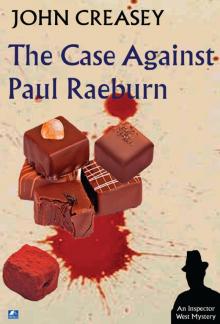 The Case Against Paul Raeburn
The Case Against Paul Raeburn An Uncivilised Election
An Uncivilised Election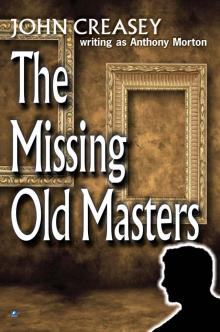 The Missing Old Masters
The Missing Old Masters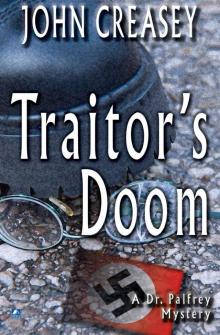 Traitor's Doom (Dr. Palfrey)
Traitor's Doom (Dr. Palfrey) The Toff on Fire
The Toff on Fire The Toff And The Stolen Tresses
The Toff And The Stolen Tresses Meet The Baron tbs-1
Meet The Baron tbs-1 Gideon’s Sport g-1
Gideon’s Sport g-1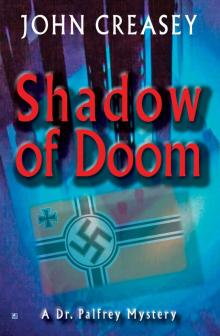 Shadow of Doom
Shadow of Doom Accuse the Toff
Accuse the Toff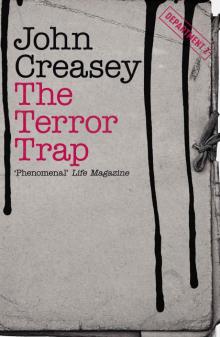 The Terror Trap (Department Z Book 7)
The Terror Trap (Department Z Book 7) Gideon's Day
Gideon's Day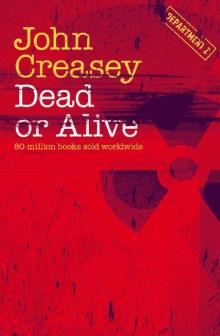 Dead or Alive (Department Z)
Dead or Alive (Department Z)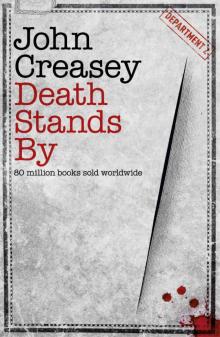 Death Stands By (Department Z)
Death Stands By (Department Z) Death by Night
Death by Night Gideon's River
Gideon's River Call for the Baron
Call for the Baron The Toff And The Stolen Tresses t-38
The Toff And The Stolen Tresses t-38 A Sharp Rise in Crime
A Sharp Rise in Crime Murder, London--South Africa
Murder, London--South Africa Death by Night (Department Z)
Death by Night (Department Z)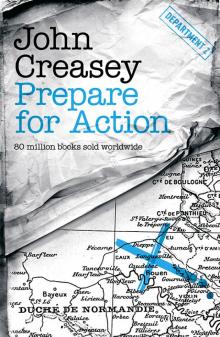 Prepare for Action
Prepare for Action Strike for Death
Strike for Death Poison For the Toff
Poison For the Toff The Toff on The Farm
The Toff on The Farm The Toff and The Sleepy Cowboy
The Toff and The Sleepy Cowboy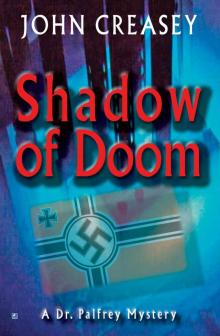 Shadow of Doom (Dr. Palfrey)
Shadow of Doom (Dr. Palfrey) Thugs and Economies (Gideon of Scotland Yard)
Thugs and Economies (Gideon of Scotland Yard) The House Of The Bears
The House Of The Bears Criminal Imports
Criminal Imports Hang The Little Man
Hang The Little Man The Toff And The Curate
The Toff And The Curate An Affair For the Baron
An Affair For the Baron Gideon's Night
Gideon's Night A Sword For the Baron
A Sword For the Baron Meet The Baron
Meet The Baron Kill The Toff
Kill The Toff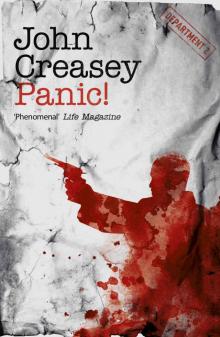 Panic! (Department Z)
Panic! (Department Z) Inspector West Alone
Inspector West Alone From Murder To A Cathedral
From Murder To A Cathedral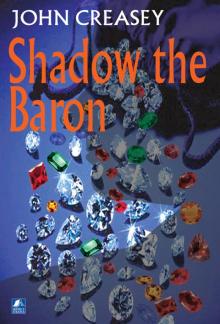 Shadow The Baron
Shadow The Baron The Toff and the Deadly Priest
The Toff and the Deadly Priest Introducing The Toff
Introducing The Toff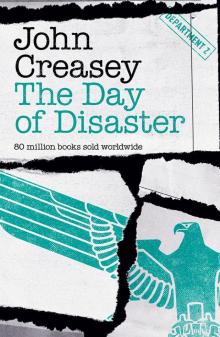 The Day of Disaster
The Day of Disaster The Baron Again
The Baron Again The Theft of Magna Carta
The Theft of Magna Carta The Toff and the Fallen Angels t-53
The Toff and the Fallen Angels t-53 Salute the Toff
Salute the Toff Murder, London-New York
Murder, London-New York Vigilantes & Biscuits
Vigilantes & Biscuits Inspector West Alone iw-9
Inspector West Alone iw-9 The Toff and the Great Illusion
The Toff and the Great Illusion Battle for Inspector West
Battle for Inspector West Impartiality Against the Mob
Impartiality Against the Mob A Mask for the Toff
A Mask for the Toff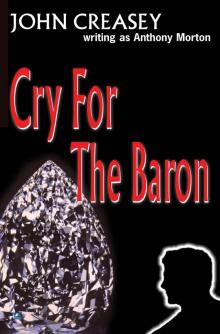 Cry For the Baron
Cry For the Baron The Depths
The Depths A Case for the Baron
A Case for the Baron The Toff at Camp
The Toff at Camp Gideon Combats Influence
Gideon Combats Influence The Toff and The Sleepy Cowboy t-57
The Toff and The Sleepy Cowboy t-57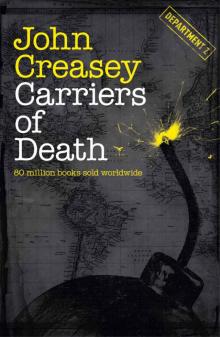 Carriers of Death (Department Z)
Carriers of Death (Department Z)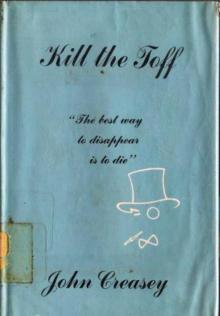 Kill The Toff t-23
Kill The Toff t-23 A Backwards Jump
A Backwards Jump Reward For the Baron
Reward For the Baron The Smog
The Smog Famine
Famine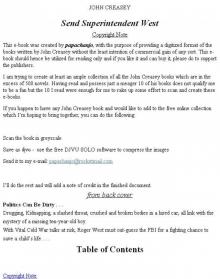 Send Superintendent West iw-7
Send Superintendent West iw-7 The Toff And The Curate t-12
The Toff And The Curate t-12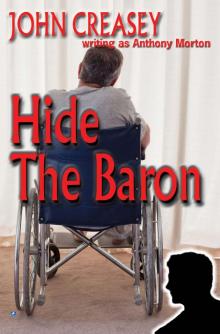 Hide the Baron
Hide the Baron The Masters of Bow Street
The Masters of Bow Street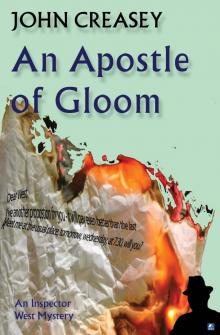 An Apostle of Gloom
An Apostle of Gloom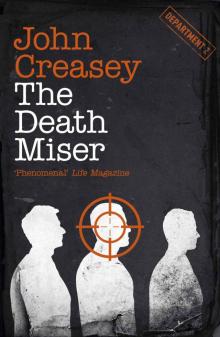 The Death Miser (Department Z Book 1)
The Death Miser (Department Z Book 1)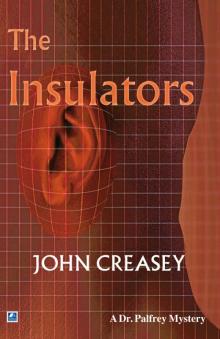 The Insulators
The Insulators Not Hidden by the Fog
Not Hidden by the Fog No Relaxation At Scotland Yard
No Relaxation At Scotland Yard A Conference For Assassins
A Conference For Assassins Gideon’s Sport
Gideon’s Sport The Flood
The Flood The Black Spiders
The Black Spiders The Baron at Large
The Baron at Large The Mask of Sumi
The Mask of Sumi The Riviera Connection
The Riviera Connection The Toff and The Lady
The Toff and The Lady Here Comes the Toff
Here Comes the Toff The Toff and the Kidnapped Child
The Toff and the Kidnapped Child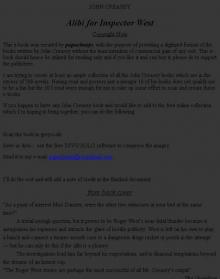 Alibi for Inspector West
Alibi for Inspector West